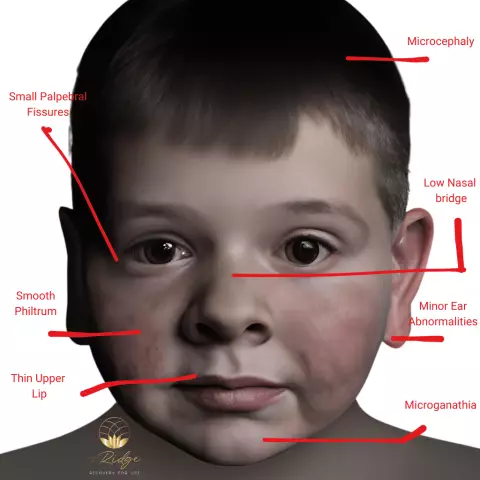- Author Rachel Wainwright [email protected].
- Public 2023-12-15 07:39.
- Last modified 2025-11-02 20:14.
Vestibulo-atactic syndrome

Vestibulo-atactic syndrome is the second most common syndrome along with pseudobulbar, cephalgic, pyramidal, amiostatic, and is characteristic of cerebral ischemia.
There is a vestibulo-atactic syndrome for various reasons, but mainly vascular disorders associated with persistent spasm or damage to the arteries of the brain lead to it.
Symptoms of the vestibulo-atactic syndrome
Symptoms of the vestibulo-atactic syndrome in the initial stages are:
- Dizziness;
- Flashing "flies" before the eyes;
- Impaired coordination;
- Nausea;
- Unsteadiness of gait.
At later stages, subjective and objective discoordination disorders are traced, clearly interconnected.
Causes of the vestibulo-atactic syndrome
The vestibulo-atactic syndrome is caused by chronic circulatory failure in the vertebrobasilar arterial basin of an acquired or congenital nature. Also, the phenomenon of vestibulo-atactic syndrome is associated with fronto-brainstem disorders, normotensive hydrocephalus, atrophy of the cortex, hypertension and atherosclerosis.
Treatment of vestibulo-atactic syndrome
Treatment of the vestibulo-atactic syndrome must begin with a qualitative analysis by interviewing the patient, neurological and otoneurological examination. This is followed by a search for signs of diffuse brain damage, the use of antihypertensive therapy, daily monitoring of blood pressure and lowering cholesterol with statins. The patient needs to completely change the diet and lead a healthy lifestyle (get rid of bad habits).
One of the most important components of treating the syndrome is prescribing antioxidants such as:
- Actovegin;
- Mildronate;
- Mexidol.
Also prescribed drugs that optimize cerebral circulation, namely Instenon, Cavinton and Trental.

For the treatment of chronic cerebral ischemia of stages 2-3, which is accompanied by vestibulo-atactic syndrome, it is possible to prescribe symptomatic therapy, which includes taking antidepressants. The safest among them are medications of the benzodiazepine series, such as Grandaxin.
The treatment of vestibulo-atactic syndrome is mainly carried out by neurologists, who, in addition to the above means, can also prescribe physiotherapeutic effects, and sometimes even hypnosis.
In some cases, in the treatment of the syndrome, surgical intervention is necessary, in which the intersection of the vasomotor fibers of the vertebral artery is performed on the affected side. The results of surgery are a decrease in persistent artery spasms and an improvement in blood circulation in the areas of the brain that are responsible for maintaining coordination and balance.
Preventive measures in order to avoid the development of vestibulo-atactic syndrome is to prevent the development of cerebral ischemia. From an early age, it is necessary to avoid stressful situations, not to abuse alcohol and tobacco smoking, and at the first manifestations of ischemia, it is necessary to reduce physical activity and avoid prolonged exposure to the sun.
Also important preventive measures are the fight against obesity and the treatment of physical inactivity. And for diseases such as diabetes mellitus, hypertension and atherosclerosis, treatment should be carried out exclusively by specialist doctors.
YouTube video related to the article:
The information is generalized and provided for informational purposes only. At the first sign of illness, see your doctor. Self-medication is hazardous to health!






